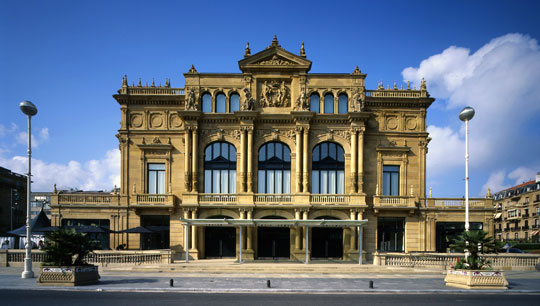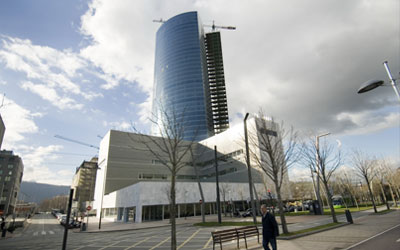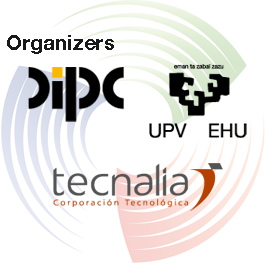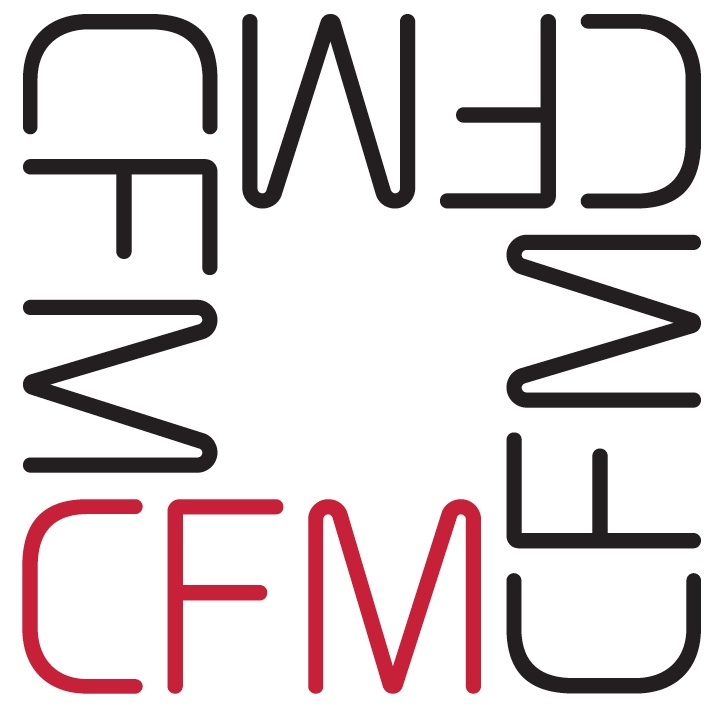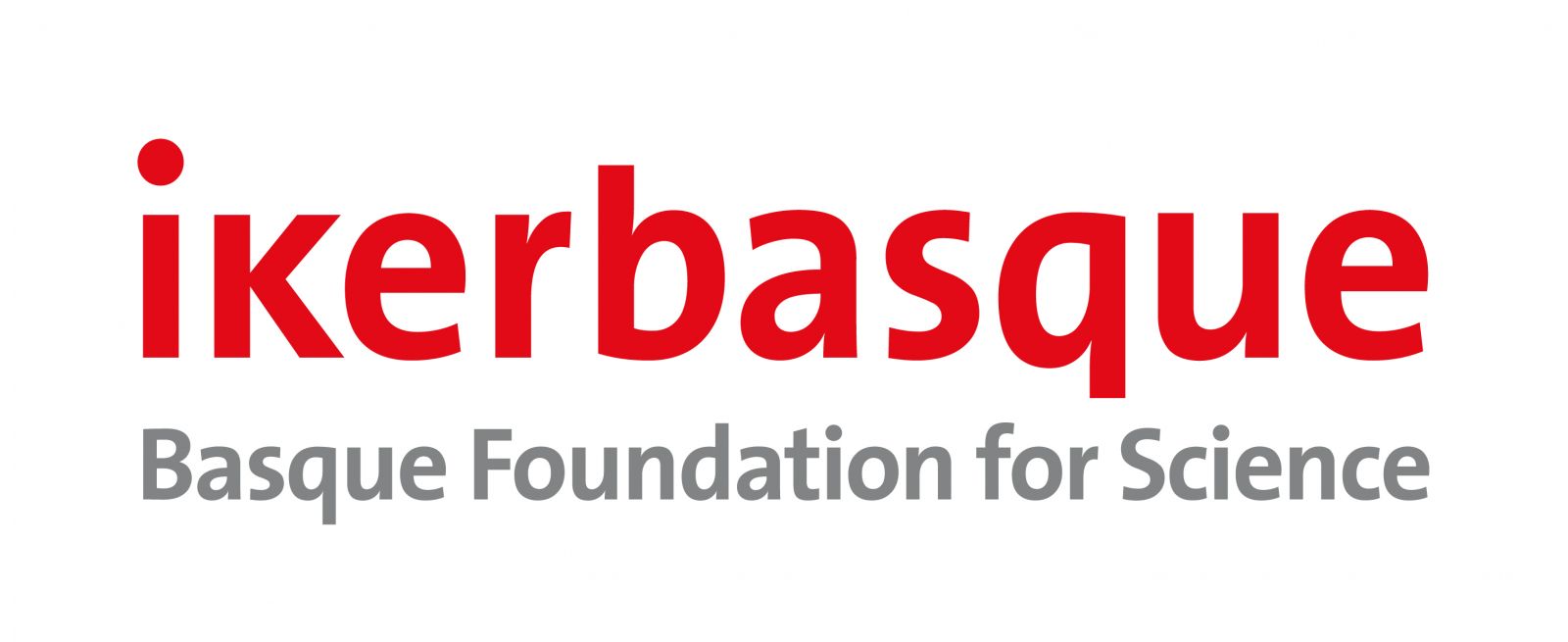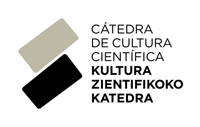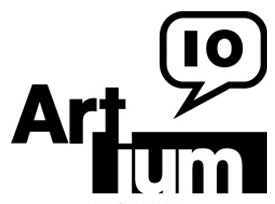Keynote Lectures
The Lectures of Passion for Knowledge - Quantum 13 aim at bringing the fascinating world of quantum mechanics and its implications in many fields to the public, as well as fostering the passion for knowledge on other topics, such as biomedicine, astrophysics, literature... Several Nobel laureates and world-leading experts will offer lectures, combining scientific rigour and entertainment to awake curiosity, interest, enthusiasm and critical thinking of society.
The main venue for the public sessions is the centenary Victoria Eugenia Theatre in Donostia-San Sebastián, chosen to strengthen the cultural aspect of science. But in addition, since we want to spread the passion for knowledge and quantum mechanics all over the Basque Country, some plenary lectures are programmed in Bilbao.
| REGISTRATION |
SPEAKERS
We are pleased to announce the following confirmed invited speakers:
|
Dame Jocelyn BELL BURNELL
Astrophysics |
Aaron CIECHANOVER
Biomedicine |
Juan Ignacio CIRAC
Theoretical Physics
Alemania |
|||
|
Claude COHEN-TANNOUDJI |
Dudley HERSCHBACH
Physical-Chemistry |
Jean-Marie LEHN Supramolecular Chemistry Université de Strasbourg, Estrasburgo, Francia |
|||
|
Amand LUCAS |
Ginés MORATA
|
Sir John PENDRY |
|||
|
Jose Maria PITARKE PhysicsnanoGUNE, Donostia, Basque Country |
Lisa RANDALL
Theoretical Physics
|
Arantxa URRETABIZKAIA
|
|||
|
Rafael YUSTE
|
|
PROGRAM
All public sessions will have interpretation service to English, Basque and Spanish and will be broadcast live in streaming.
 Euskera
Euskera  Castellano
Castellano  English
English
|
Monday 30 SEPT. |
Tuesday 1 OCT. |
Wednesday 2 OCT. |
Thursday 3 OCT. |
Friday 4 OCT. |
|||
| 18:00 - 20:00 |
Public Lectures Victoria Eugenia, Donostia |
17:00 - 19:15 |
Public Lectures
Victoria Eugenia, Donostia |
Public Lectures
Victoria Eugenia, Donostia |
Public Lectures Victoria Eugenia, Donostia
|
Public Lectures Victoria Eugenia, Donostia |
|
| 18:00 |
Opening |
17:00 |
José Ignacio
LATORRE |
Claude |
Sir John |
Amand
LUCAS |
|
| 18:30 |
Dudley |
17:45 |
Aaron CIECHANOVER |
José María
PITARKE |
Arantxa |
Ginés
MORATA |
|
| 19:15 |
Juan Ignacio |
18:30 |
Rafael
YUSTE |
Dame Jocelyn
|
Jean-Marie
LEHN |
Closure | |
| 19:00 - 20:00 |
Public Lectures |
Public Lectures |
|
||||
|
Dame Jocelyn |
Rafael
YUSTE |
Click on the date to view the full program of the day.
|
Monday 30 SEPT. |
Tuesday 1 OCT. |
Wednesday 2 OCT. |
Thursday 3 OCT. |
Friday 4 OCT. |
Click on title to display the abstract of the keynote.
| Monday 30 SEPT. | ||
| 18:00 - 20:00 |
Public Lectures Victoria Eugenia, Donostia |
|
| 18:00 | ||
| 18:30 |
Dudley HERSCHBACH |
|
| 19:15 |
Juan Ignacio CIRAC
The supercomputers of the future |
| Tuesday 1 OCT. | ||
| 17:00 - 19:15 |
Public Lectures Victoria Eugenia, Donostia |
|
| 17:00 |
Lisa RANDALL Cancelled
A review talk or talk about new work on dark matter. José Ignacio LATORRE Física Teórica El elusivo boson de Higgs |
|
| 17:45 |
Aaron CIECHANOVER
The Personalized Medicine Revolution: |
|
| 18:30 |
Rafael YUSTE The Brain Activity Map: Imaging the Activity of Entire Neural Circuits
In physical systems built with many components, emergent properties, such as magnetism, are often generated from the interactions among these particles. These emergent properties are often invisible when observing individual particles, since they depend on large-scale interactions between them. Likewise, the function of the brain has been mostly studied by examining the responses of individual neurons, yet it is probably an emergent property that arises from the coordinated activity of large numbers of neurons in each of its neural circuits. |
|
| 19:00 - 20:00 | ||
|
Dame Jocelyn BELL BURNELL Are black holes just science fiction, or are they real? Is there any good evidence for their existence? What are white holes, and wormholes? This talk will describe what black holes are, how they are formed and how we might (or might not) know if one was close to us. White holes, wormholes and how we might live off a black hole will also be briefly discussed. |
| Wednesday 2 OCT. | ||
| 17:00 - 19:15 |
Public Lectures Victoria Eugenia, Donostia |
|
| 17:00 |
Claude COHEN-TANNOUDJI Conservation laws are very important in quantum physics. Two examples of applications will be given in this lecture. The first one is optical pumping which uses transfer of angular momentum from polarized photons to atoms to produce highly polarized atomic gases allowing a very sensitive detection of magnetic resonance. The second example is laser cooling which uses transfer of linear momentum from photons to atoms to produce large radiative forces acting on these atoms and allowing one to cool them at extremely low temperatures. Various applications of optical pumping and laser cooling will be briefly reviewed showing how long term basic research is essential for improving our understanding of the world and for giving rise to a wealth of important applications. |
|
| 17:45 |
José María PITARKE Graphene is a one-atom thick layer of carbon atoms. It is the thinnest imaginable material, a million times thinner than a piece of paper. It is a revolutionary new material that has the potential to impact almost every aspect of our lives; it is believed that graphene might well trigger the next technological revolution. Graphene has all superlatives. It is stronger than the strongest steel and harder than diamond. It can be graded as the most impermeable material. It is an excellent conductor of heat and electricity. It is flexible, stretchable, transparent, and the list goes on. This lecture aims at describing the fundamentals of graphene, its properties, and its applications. |
|
| 18:30 |
Dame Jocelyn BELL BURNELL Are black holes just science fiction, or are they real? Is there any good evidence for their existence? What are white holes, and wormholes? This talk will describe what black holes are, how they are formed and how we might (or might not) know if one was close to us. White holes, wormholes and how we might live off a black hole will also be briefly discussed. |
|
| 19:00 - 20:00 | ||
| 19:00 |
Rafael YUSTE The Brain Activity Map: Imaging the Activity of Entire Neural Circuits
In physical systems built with many components, emergent properties, such as magnetism, are often generated from the interactions among these particles. These emergent properties are often invisible when observing individual particles, since they depend on large-scale interactions between them. Likewise, the function of the brain has been mostly studied by examining the responses of individual neurons, yet it is probably an emergent property that arises from the coordinated activity of large numbers of neurons in each of its neural circuits. |
| Thursday 3 OCT. | ||
| 17:00 - 19:15 |
Public Lectures |
|
| 17:00 |
Sir John PENDRY Electromagnetism encompasses much of modern technology. Its influence rests on our ability to deploy materials that can control the component electric and magnetic fields. A new class of materials has created some extraordinary possibilities such as a negative refractive index, and lenses whose resolution is limited only by the precision with which we can manufacture them. Cloaks have been designed and built that hide objects within them, but remain completely invisible to external observers. The new materials, named metamaterials, have properties determined as much by their internal physical structure as by their chemical composition and the radical new properties to which they give access promise to transform our ability to control much of the electromagnetic spectrum. |
|
| 17:45 |
Arantxa URRETABIZKAIA
We must be doing something right in relation to the Basque language |
|
| 18:30 |
Jean-Marie LEHN |
| Friday 4 OCT. | ||
| 17:00 - 19:15 |
Public Lectures |
|
| 17:00 |
Amand LUCAS Niels Bohr, X-Rays and the Secret of Life The discovery of Bohr’s atomic model in 1913 coincided with several other breakthroughs in physics, notably the discovery of diffraction of X-Rays by an atomic lattice which revealed their electromagnetic nature and lead to their use for the determination of atomic structures. The X-Ray diffraction method was soon applied to large biomolecules whose structure could hint at their function in life processes at the molecular level. With respect to the nature of life, Bohr defended strong vues, inspired from the quantum complementarity concept, which although influential in creating a research legacy, would not be upheld by later discoveries in biology. The search for bio-molecular structures and functions triumphed in 1953 with the discovery of the DNA double helix boldly characterized by J. Watson and F. Crick as the “Secret of Life”. I will explain just how X-Ray diffraction of DNA fibers, measured by M. Wilkins and R. Franklin, guided Crick and Watson to their great discovery. In view of making X-Ray fiber diffraction understandable to a lay audience, I will present optical diffraction experiments to demonstrate visually which structural characteristic of the DNA conformations corresponds to each major feature of their X-Ray images. By the time of Bohr’s death in 1962, a prosaic kind of chemical complementarity had been found to preside all over bio-molecular processes but had nothing in common with the complementarity envisaged by the great quantum creator. |
|
| 17:45 |
Ginés MORATA |
|
| 18:30 | Closure |
All Public Lectures will have free access upon prior registration.
VENUE
|
|
Victoria Eugenia Theater
República Argentina, 2
Official website |
|
|
| See Map |
|
|
Bizkaia Aretoa
Official website
|
|
|
| See Map |
|
Bus |
Taxi | Bike |
|
All the lines stop at Boulevard, located at 5 min from Victoria Eugenia Theater.
|
Taxis don't pick up passengers in the street, they must go to a taxi stop or call to a radio-taxi company. | There are more than 30 kms of bike paths ("bidegorris" in Basque) in the city, painted in red in the streets. |
|
Companies:
Vallina Tel: +34 943 40 40 40 |
Itinerary: See Map Line: 002 and Local Network |
News Bulletin
Enter your e-mail address to get updates of the conference
Last minute news
.................................................
Lectures videos at DIPC.TV
More information
.................................................
.................................................
Like us, find us,
follow us
![]()
![]()
![]()
![]()
.................................................
Get talking ...
![]() Tweets sobre "@DIPCehu OR @euskampus OR #quantum13"
Tweets sobre "@DIPCehu OR @euskampus OR #quantum13"
@DIPCehu | @euskampus
#quantum13
.................................................
Passion for Knowledge - Quantum 13
September 30 - October 6
Basque Country, Spain ![]()
Organized by:
DIPC within the framework of euskampus
Technical Secretariat
Lankor - Conferences and Events
Parque Empresarial Zuatzu, Edif. Zurriola planta baja local 5
20018 Donostia - San Sebastián
Tel: +34 943 42 81 11 E-mail: larraitz@lankor.com
Fax: +34 943 42 80 55 Web: www.lankor.com
Multiplatform
Web adapted to smarthphone and tablet.
Esta obra está bajo una Licencia Creative Commons Atribución-NoComercial-CompartirIgual 3.0 España 




